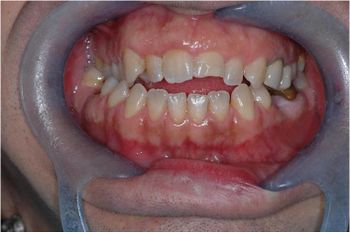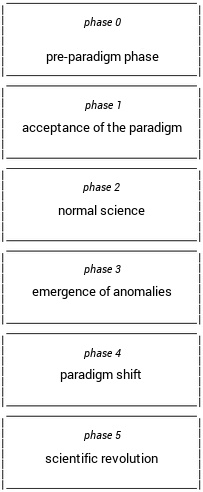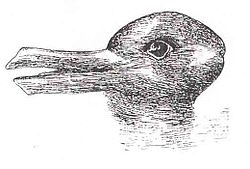Introduction
Abstract
The introduction of Masticationpedia offers a deep and complex analysis on themes that span the evolution of science, with a particular focus on medicine and dentistry. It begins by examining the epistemological transformation of science through the lens of Kuhn's paradigms, emphasizing the importance of paradigmatic changes that science, including dentistry, has experienced and continues to experience. The document outlines the stages of paradigmatic change proposed by Kuhn, applying them to the field of dentistry, where it highlights a paradigmatic crisis that calls for an evolution towards new paradigms, especially in masticatory rehabilitation. The discussion extends to epistemology, considering how science acquires knowledge and addresses the issue of the verifiability of scientific theories. A critical emphasis is placed on the use and interpretation of the P value in scientific statistics, highlighting the ongoing debate about its reliability as an indicator.
The text strongly emphasizes the crucial role of interdisciplinary research, proposing the use of "metacognitive scaffolds" to overcome communicative difficulties between different disciplines. It proposes a holistic and interdisciplinary approach to understanding masticatory disorders, particularly malocclusion, which is explored not only from the traditional orthodontic perspective but also through a broader lens that considers the masticatory system as a whole.
Through the examination of a clinical case study, the traditional interpretation of malocclusion is questioned, suggesting that understanding malocclusion requires a view that considers the complexity of the masticatory system and its interaction with the nervous system. The introduction concludes by highlighting the importance of paradigmatic innovations that go beyond incremental improvements, to embrace a change in thinking that profoundly influences masticatory science.
This approach represents an invitation to overcome the limits of traditional dental conventions, proposing a model of understanding and treatment of masticatory disorders that is truly interdisciplinary, based on principles of open and inclusive science, oriented towards the acceptance of uncertainty, and the holistic evaluation of the patient.
Ab ovo[1]
Before diving into the analysis of Masticationpedia, it is necessary to introduce some preliminary considerations. These concern, in particular, two fundamental dimensions - social, scientific, and clinical - that are characteristic of both the current era and the one immediately preceding it.
The phases of paradigm change according to Thomas Kuhn
In the course of the last century, there has been an exponential increase in technological and methodological "Innovations",[2] especially in the field of dentistry. These advancements have significantly influenced decision-making strategies, opinions, schools of thought, and axioms, aiming explicitly at improving the quality of life, as highlighted in the "Science of Exposure in the 21st Century".[3] However, this exponential growth implicitly hides conceptual ambiguities - or, in practical terms, "side effects" - which, although sometimes underestimated, have the power to challenge some scientific certainties, making them less rigid and more subject to probability.[4] The sensitive aspects of the current social, scientific, and clinical reality, which may seem contrasting, will be revealed to be complementary by the end of this reading; this is the "Progress of science" according to Kuhn's interpretation and "Epistemology".
In analyzing the progress of science, Thomas Kuhn, in his most famous work, argues that science develops through distinct cycles, reflecting its operational dynamics.[5][6] Kuhn advances the idea that science is structured around paradigms and establishes a clear demarcation between science and pseudoscience, based on the presence of a shared paradigm. For him, the evolution of scientific progress is seen as a continuous curve, yet interrupted by discontinuities represented by paradigm shifts.
Taking on the role of a skilled problem solver, the scientist is engaged in resolving these anomalies. These moments of discontinuity, or scientific revolutions, occur when the existing paradigm can no longer adequately interpret new anomalies, thereby pushing the scientific community towards the exploration and eventual adoption of new paradigms that better align with emerging observations.
Kuhn's phases in Dentistry
Thomas Kuhn identifies in the evolution of a scientific paradigm five distinct phases, a process that holds crucial importance for Masticationpedia. To stay in line with the project's objectives, we will focus on the description of the three most significant phases, as outlined in the book's index.
Thomas Kuhn in his most famous work states that science cyclically passes through some phases indicative of its operation. According to Kuhn, science is paradigmatic, and the demarcation between science and pseudoscience can be traced back to the existence of a paradigm. The evolution of scientific progress is assimilated to a continuous curve which undergoes discontinuity in paradigm changes.
Kuhn's phases in Dentistry
Kuhn, on the other hand, divides the evolution of a paradigm into five phases; this is a fundamental process for Masticationpedia, but to stay tuned with the project we will limit ourselves to describing the three most significant phases shared in the project and indicated in the index of the book:
| |
| |
|
It's almost taken for granted that Kuhn's scientific philosophy gives priority to discipline, since an anomaly within the genetic paradigm will be more easily recognized by a geneticist rather than a neurophysiologist. This concept, however, seems to contradict the epistemological evolution of Science, thereby making a detailed analysis of this apparent discrepancy appropriate.
Epistemology
| The black swan symbolizes one of the historical problems of epistemology: if all the swans we have seen so far are white, can we decide that all the swans are white? Really? |
|
| Kuhn used optical illusion to demonstrate how a paradigm shift can cause a person to see the same information in a completely different way: which animal is the one here aside? Sure? |
Epistemology (from the Greek ἐπιστήμη, epistēmē, meaning "certain knowledge" or "science", and λόγος, logos, "discourse") represents that branch of philosophy dedicated to the study of the necessary conditions for acquiring scientific knowledge and the methods through which such knowledge can be achieved.[7] This term specifically refers to that section of gnoseology that investigates the foundations, the validity, and the limits of scientific knowledge. In English-speaking countries, the concept of epistemology is commonly employed almost as a synonym for gnoseology or theory of knowledge, that is, the discipline that examines the study of knowledge in general.
It is important to emphasize that the central problem of epistemology, today as in the times of Hume, is the issue of verifiability.[8][9]
The Hempel's paradox asserts that the observation of every white swan provides support to the statement that all ravens are black;[10] in other words, every example that does not contradict the theory confirms a part of it. According to this paradox:
According to the criterion of falsifiability, no theory can be considered definitively true, as although there is only a finite number of experiments that can confirm it, theoretically there is an infinite number of experiments that could refute it.[11]
|
But it’s not all so obvious... |
...because the very concept of epistemology meets continuous implementations, like in medicine:
|
|
Anomaly vs. Interdisciplinarity
A superficial view might suggest that the epistemic evolution of science is marked by an apparent opposition between the aspects of disciplinarity, highlighted by the "Physics Paradigm of Science" (which sheds light on anomalies), and those of interdisciplinarity, represented by the "Engineering Paradigm of Science" (and the related concept of metacognitive scaffold). However, as will be explored in this chapter, these two perspectives are not actually in conflict; on the contrary, they prove to be complementary, as both contribute to the generation of a "Paradigmatic Innovation" without any form of conflict.
It could then be argued that "Innovations" themselves represent "Progresses of Science," as illustrated in the article "Scientific Bases of Dentistry" by Yegane Guven. This work explores the impact of biological and digital revolutions on education and daily clinical practice in dentistry, covering topics such as personalized regenerative dentistry, nanotechnologies, virtual reality simulations, genomic information, and stem cell research.[21] Although the innovations mentioned are technological and methodological in nature, it is crucial to recognize that true scientific progress does not occur exclusively through "Incremental Innovations" or "Radical Innovations," but is fundamentally achieved through "Paradigmatic Innovations."
In the strictest sense of the term, "Paradigmatic Innovations" are a change in thinking and awareness that spreads throughout all of humanity, affecting different social layers, from the Copernican revolution to the recent trend of approaching biological phenomena with a stochastic method.[22]
This epistemological context, which includes initiatives such as the Research Diagnostic Criteria for Temporomandibular Disorders (RDC/TMD), Evidence-Based Medicine, and others, is further explored in the Masticationpedia project. The latter aims to highlight the dynamics and dialectics of progress in the science of masticatory rehabilitations, emphasizing the anomalies that stimulate a change in thought and, consequently, a "Paradigmatic Innovation."
Before proceeding, it might be appropriate to observe a very concrete and significant case.
Malocclusion
"Malocclusion" derives from the Latin "malum," meaning "bad" or "wrong," and literally refers to an improper closure of the teeth.[23] The notion of "closure" may seem intuitive; however, the adjective "bad" requires careful consideration, as its application in the medical context is less obvious than it may appear.
To approach an understanding of the term, this introduction poses a seemingly simple yet profoundly complex question, which in turn raises a series of related inquiries in the field of masticatory rehabilitation and, more specifically, in orthodontic disciplines: what exactly is meant by "Malocclusion"? It's interesting to note that, in 2019, a search for the term "Malocclusion" on PubMed yielded a whopping 33,309 articles,[24] indicating a lack of uniform terminological consensus on the subject. Among these articles, some may provide conclusions of significant relevance, as strikingly demonstrated by the work of Smaglyuk and colleagues. This particularly significant study explores the interdisciplinary approach in diagnosing malocclusions:[25]
Another noteworthy fact is that if in the same 2019 Pubmed was questioned on interdisciplinarity in the diagnosis of malocclusions, the result dropped drastically to just four articles[26].
These premises to the "Malocclusion” question indicate, on one hand, an alert about anomalies that tend to activate Kuhn phase 4 and, on the other, a bifurcation in the epistemic choice on the subject: one that generates Incremental Innovations (others 33,309 articles, perhaps) and another that prefers a new gnoseological path of "Paradigmatic Innovation”.
Let’s try to approach part of the concept that considers the "Paradigmatic Innovation” as essential, asking ourselves for example:
|
What does "Malocclusion" mean? |
We will answer this question by reporting a clinical case of evident “Malocclusion”.
Patient is with an occlusion that orthodontists call “Malocclusion” because it has a posterior unilateral crossbite and anterior openbite[27]; it is a malocclusion that can be treated with a fixed orthodontic therapy and possibly in combination with an orthognathic intervention[28]. Crossbite is another element of disturbance in normal occlusion[29] because of which it is obligatorily treated together with the openbite[30][31]. It is self-evident that an observer with a deterministic mindset facing a phenomenon of such evident occlusal incongruity considers crossbite and openbite the cause of malocclusion (cause/effect) or vice versa; and it is obvious, as well, that the observer recommends an orthodontic treatment to restore a “Normocclusion”. This way of reasoning means that the model (masticatory system) is “normalized to occlusion”, and if read backwards it means that the occlusal discrepancy is the cause of malocclusion and, therefore, of disease of the Masticatory System. (Figure 1a).
But let's hear what the two players say, the dentist and the patient, in the informative dialogue.
The dentist tells the patient that he is suffering from severe malocclusion and that it should be treated to improve its aesthetics and chewing function. The patient, however, replies firmly: «No way, I haven't the slightest idea to do it at all, doctor, because I might even have an unrepresentative smile, but I eat very well.»
The dentist’s reply is ready, so the practitioner insists by saying: «but you have a serious malocclusion with an openbite and a unilateral posterior crossbite, you should already have problems with bruxism and swallowing, as well as posture.»
The patient closes the confrontation in a decisive way: «absolutely false: I chew very well, I swallow very well and at night I snore alot so I don’t grind; besides, I’m a sportsman and I don’t have any postural disturbance».
Now the conclusion remains very critical because we might be finding ourselves in front of a verbal language of the patient which is misleading because it is not specific and does not respond to a detailed physiopathogenetic knowledge of the occlusal state; or, paradoxically, we are otherwise facing a machine language converted into verbal language which guarantees the integrity of the system. At this point the situation is truly embarrassing because neither the patient nor the observer (dentist) will be able to say with certainty that the System is in a “Malocclusion” state.
It is precisely at this moment that one remembers the criticism of the American Statistician Association titled “Statistical inference in the 21st century: A World Beyond p <0.05”, which urges the researcher to accept uncertainty, be sensible reflective, open and modest in his statements[16]: which basically translates into a search for interdisciplinarity.
Interdisciplinarity, in fact, could answer such a complex question; but it is nonetheless necessary to interpret the biological phenomenon of "“Malocclusion”" with a stochastic forma mentis of which we will discuss in detail later..
A stochastic observer may observe that there is a low probability that the patient, at the moment , is in a state of occlusal disease, as the patient's natural language indicates ideal psychophysical health; he/she then concludes that the occlusal discrepancy could not be a cause of neuromuscular and psychophysical functional disorder. In this case, therefore, the Masticatory System can not only be normalized to the occlusion only, but a more complex model is needed too, so it has to be normalized to the Trigeminal Nervous System. The patient was then served a series of trigeminal electrophysiological tests to assess the integrity of his/her Trigeminal Nervous System in these “"Malocclusion”" clinical conditions.
We can see the following output responses, which we report directly in figures 1b, 1c and 1d (with explanation in the caption, to simplify the discussion). These tests and their description by now should only be considered as “Conceptual Rationale” for the “Malocclusion” question; later they will be widely described and their analysis detailed in the specific chapters. It can already be noted in this first descriptive approach to the masticatory phenomenon that there is an evident discrepancy between the occlusal state (which at first would support the orthodoxy of classical orthodontics in considering it as “Malocclusive State”) and the neurophysiological data indicating incredible synchronization and perfect symmetry of the trigeminal reflexes.
These results can be attributed to anything less than a "malocclusion": we are obviously in front of an error of the logic Language in medicine, in this case it is in fact more appropriate to talk about:
|
Occlusal dysmorphism and not Malocclusion (which, as we shall see a little further on, is quite another thing) |
Conclusion
Even before drawing conclusions, conceptual clarity must be made on some fundamental points which of course will be treated in detail in the specific chapters of Masticationpedia.
The Masticatory System should be considered as a “Complex System”[32], not as a Biomechanical System focused exclusively on dental occlusion, because in this sense the “Occlusion” is nothing more than a subset of the Complex System interacting with the other subsets, such as periodontal receptors, neuromuscular spindles, recruitment of motor units, central nervous system, temporomandibular joint, etc., to give shape to an “Emerging Behaviour”, the masticatory one.
The peculiarity of this concept is that it is not possible to interpret or predict the “Emerging Behaviour” of a System by extracting objective data from a single subset. Instead, the integrity of the System must be quantified in its entirety, and only then can a segmentation of the whole be attempted to make an analytical description of the node itself. There are very important intellectual and scientific movements that are engaging with this issue; in this regard, the extraordinary work of Prof. Kazem Sadegh-Zadeh: Handbook of Analytic Philosophy of Medicine comes to mind.[33]
In the presented case, the question is resolved in the following language logic:
- The subsets of the Masticatory System (teeth, occlusion, Temporomandibular joints, muscles, etc.) are in a state of "Coherence” with the Central Trigeminal Nervous System (see figures 1b, 1c and 1d), so the term “Malocclusion” cannot be used, the phrase “Occlusal Dismorphism” should be considered instead.
- «This does not mean abolishing prosthetic, orthodontic and orthognathic masticatory rehabilitation treatments: on the contrary, this forma mentis tends to restore medical knowledge to dental rehabilitation disciplines, as well as offering an alternative to the scientific reductionism that converges in a deterministic interpretation of the biological phenomenon.»
|
What do we mean by “Complex Systems” when we are talking about masticatory functions? |
- ↑ Latin for 'since the very beginning'
- ↑ Heft MW, Fox CH, Duncan RP, «Assessing the Translation of Research and Innovation into Dental Practice», in JDR Clin Trans Res, 2019».
DOI:10.1177/2380084419879391 Oct 7:2380084419879391 - ↑ «Exposure Science in the 21st Century. A Vision and a Strategy», Committee on Human and Environmental Exposure Science in the 21st Century; Board on Environmental Studies and Toxicology; Division on Earth and Life Studies; National Research Council.».
ISBN: 0-309-26468-5 - ↑ Liu L, Li Y, «The unexpected side effects and safety of therapeutic monoclonal antibodies», in Drugs Today, 2014, Barcellona».
DOI:10.1358/dot.2014.50.1.2076506 Jan;50(1):33-50 - ↑ Thomas Samuel Kuhn (Cincinnati, 18 luglio 1922 – Cambridge, 17 giugno 1996) was an American philosopher of science.
See Treccani, Kuhn, Thomas Samuel. Or Wikipedia, Thomas Kuhn. - ↑ Kuhn Thomas S, «The Structure of Scientific Revolutions», Univ. of Chicago Press, 2012, Chicago».
ISBN: 9780226458113 - ↑ The term is believed to have been coined by the Scottish philosopher James Frederick Ferrier, in his Institutes of Metaphysic (p.46), of 1854; see Internet Encyclopedia of Philosophy, James Frederick Ferrier (1808—1864).
- ↑ David Hume (Edimburgo, 7 maggio 1711[1] – Edimburgo, 25 agosto 1776) was a Scottish philosopher. He is considered the third and perhaps the most radical of the British Empiricists, after the Englishman John Locke and the Anglo-Irish George Berkeley.
- ↑ Srivastava S, «Verifiability is a core principle of science», in Behav Brain Sci, Cambridge University Press, 2018, Cambridge».
DOI:10.1017/S0140525X18000869 Jan;41:e150. - ↑ Here we obviously refer to the well-known paradox called "of the crows", or "of the black crows", formulated by the philosopher and mathematician Carl Gustav Hempel, better explained in Wikipedia's article Raven paradox:
See Good IJ, «The Paradox of Confirmation», in Br J Philos Sci, 1960 – in «Vol. 11». - ↑ Evans M, «Measuring statistical evidence using relative belief», in Comput Struct Biotechnol J, 2016».
DOI:10.1016/j.csbj.2015.12.001 Jan 7;14:91-6. - ↑ Amrhein V, Greenland S, McShane B, «Scientists rise up against statistical significance», in Nature, 2019».
DOI:10.1038/d41586-019-00857-9 Mar;567(7748):305-307. - ↑ Rodgers JL, «The epistemology of mathematical and statistical modeling: a quiet methodological revolution», in Am Psychol, 2010».
DOI:10.1037/a0018326 Jan;65(1):1-12. - ↑ Meehl P, «The problem is epistemology, not statistics: replace significance tests by confidence intervals and quantify accuracy of risky numerical predictions», 1997». , in eds Harlow L. L., Mulaik S. A., Steiger J. H., What If There Were No Significance Tests? - editors. (Mahwah: Erlbaum, 393–425. [Google Scholar]
- ↑ Sprenger J, Hartmann S, «Bayesian Philosophy of Science. Variations on a Theme by the Reverend Thomas Bayes», Oxford University Press, 2019, Oxford».
- ↑ 16.0 16.1 Wasserstein RL, Schirm AL, Lazar NA, «Moving to a World Beyond p < 0.05», in Am Stat, 2019».
DOI:10.1080/00031305.2019.1583913 73, 1–19. - ↑ Dettweiler Ulrich, «The Rationality of Science and the Inevitability of Defining Prior Beliefs in Empirical Research», in Front Psychol, 2019».
DOI:10.3389/fpsyg.2019.01866 Aug 13;10:1866. - ↑ European Union, Horizon 2020
- ↑ Boon M, Van Baalen S, «Epistemology for interdisciplinary research - shifting philosophical paradigms of science», in Eur J Philos Sci, 2019».
DOI:10.1007/s13194-018-0242-4 9(1):16. - ↑ Boon M, «An engineering paradigm in the biomedical sciences: Knowledge as epistemic tool», in Prog Biophys Mol Biol, 2017».
DOI:10.1016/j.pbiomolbio.2017.04.001 Oct;129:25-39. - ↑ Guven Y, «Scientific basis of dentistry», in J Istanb Univ Fac Den, 2017».
DOI:10.17096/jiufd.04646 51(3): 64–71. Published online 2017 Oct 2. PMCID: PMC5624148 - PMID: 29114433 - ↑ Zhao XF, Gojo I, York T, Ning Y, Baer MR, «Diagnosis of biphenotypic acute leukemia: a paradigmatic approach», in Int J Clin Exp Pathol, 2010». Prepublished online 2009 Oct 10. PMCID: PMC2776262 - PMID: 19918331. 3(1): 75–86.
- ↑ The creation of the term is generally attributed to Edward Angle, considered the father of modern orthodontics, who coined it as a specification of occlusion to signal the incorrect opposition in closing of the lower teeth and upper, especially the first molar; see Gruenbaum T, «Famous Figures in Dentistry», in Mouth – JASDA, 2010». , 30(1):18.
- ↑ Pubmed, Malocclusion
- ↑ Smaglyuk LV, Voronkova HV, Karasiunok AY, Liakhovska AV, Solovei KO, «Interdisciplinary approach to diagnostics of malocclusions (review)», in Wiad Lek, 2019». 72(5 cz 1):918-922.
- ↑ Pubmed, interdisciplinary diagnostics of malocclusions
- ↑ Littlewood SJ, Kandasamy S, Huang G, «Retention and relapse in clinical practice», in Aust Dent J, 2017».
DOI:10.1111/adj.12475 Mar;62 Suppl 1:51-57. - ↑ Reichert I, Figel P, Winchester L, «Orthodontic treatment of anterior open bite: a review article--is surgery always necessary?», in Oral Maxillofac Surg, 2014».
DOI:10.1007/s10006-013-0430-5 Sep;18(3):271-7. - ↑ Miamoto CB, Silva Marques L, Abreu LG, Paiva SM, «Impact of two early treatment protocols for anterior dental crossbite on children’s quality of life», in Dental Press J Orthod, 2018». Jan-Feb; 23(1) 71–78.
- ↑ Alachioti XS, Dimopoulou E, Vlasakidou A, Athanasiou AE, «Amelogenesis imperfecta and anterior open bite: Etiological, classification, clinical and management interrelationships», in J Orthod Sci, 2014».
DOI:10.4103/2278-0203.127547 Jan-Mar; 3(1): 1–6. - ↑ Mizrahi E, «A review of anterior open bite», in Br J Orthod, 1978». Jan;5(1):21-7.
- ↑ Complex system on Wikipedia
- ↑ Sadegh-Zadeh Kazem, «Handbook of Analytic Philosophy of Medicine», Springer, 2012, Dordrecht».
ISBN: 978-94-007-2259-0
DOI:10.1007/978-94-007-2260-6 .
particularly focusing on the field of the neurophysiology of the masticatory system











